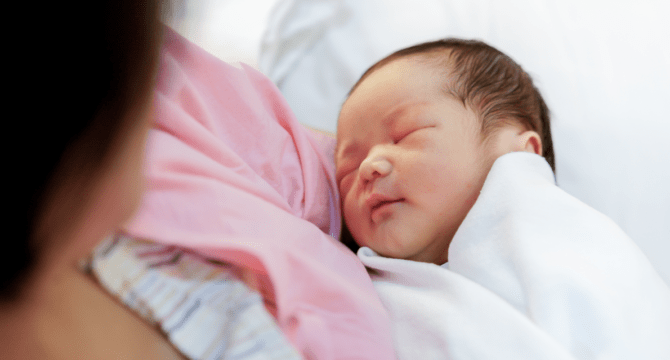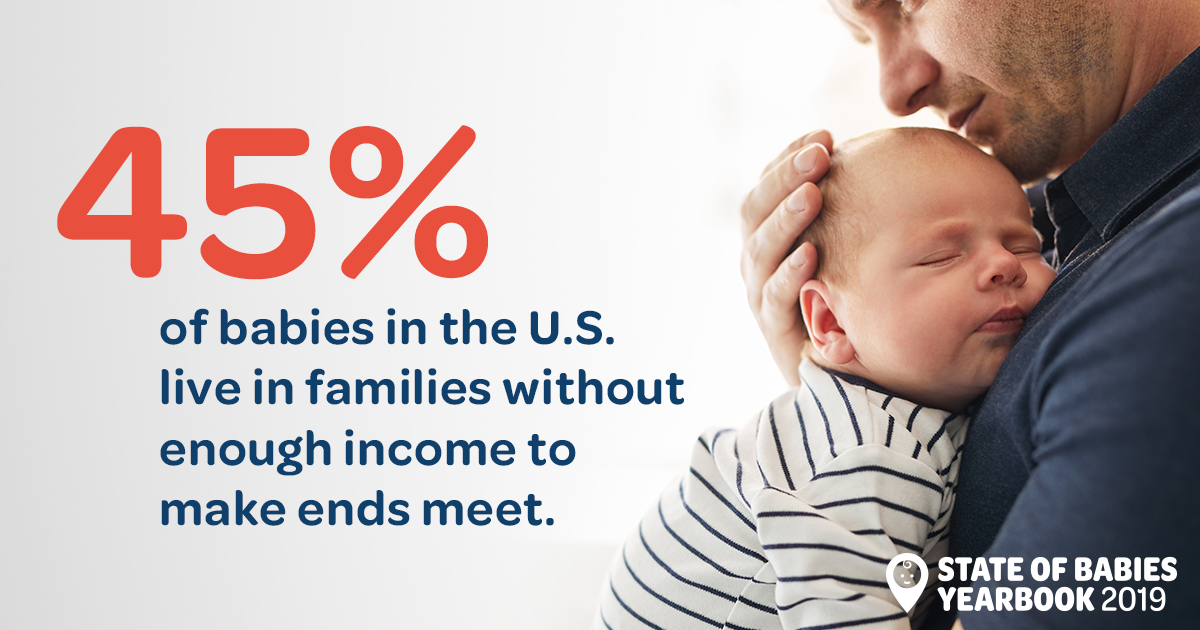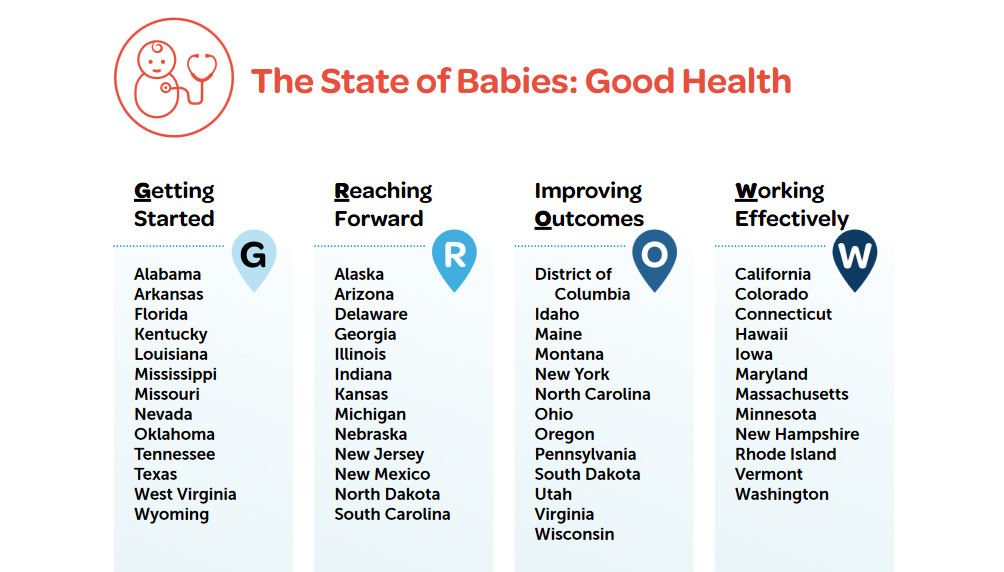
Share On Social!
Today’s children are more diverse than at any other time in U.S. history. More than half (50.4%) of babies are Latino and other children of color.
These changing demographics have substantial implications for planning policies and services that best meet the increasingly diverse familial, cultural, and language needs of our youngest children, according to the new State of Babies Yearbook: 2019 from ZERO TO THREE and Child Trends.
Yet children of color and their families face big barriers to health equity.
The states where these children are born and live during their first three years makes a big difference in their chance for a strong start in life.
“Opportunities to grow and flourish are not shared equally by the nation’s infants, toddlers, and families,” according to the yearbook. “We cannot afford to squander the potential of a single child if our nation is to thrive.”
The ‘State of Babies’ for Children of Color
Infants and toddlers who are Latino and of other communities of color are disproportionately at risk for poorer health, according to the yearbook.
Poverty is a big reason.
Infants and toddlers represent only 4% of the nation’s population, but 6% of those in poverty. We already know that Latino kids suffer poverty and big gaps in education and healthcare.
 Parents of color are two to three times more likely to face poverty than their white counterparts. Many southern U.S. states, which have large Latino populations, struggle with poverty.
Parents of color are two to three times more likely to face poverty than their white counterparts. Many southern U.S. states, which have large Latino populations, struggle with poverty.
45% of parents live in families without enough income to make ends meet.
Of mothers with infants and toddlers in low-wage jobs, 21% are black and 30% are Latino.
“Parents of color are, on average, less able to afford the high cost of infant and toddler child care,” according to the report. They are also “more likely to live in economically disadvantaged communities that lack high-quality early care providers.”
Here are more striking statistics on infants and toddlers of color:
- More likely to live in neighborhoods their parents characterize as unsafe. Also more likely to experience housing instability.
- Exposed to one or more potentially traumatic experiences.
- Disproportionately represented in the child welfare system (especially Blacks and Latinos).
The ‘State of Babies’ by State
The yearbook ranks states into four tiers.
The first tier is “getting started.” Then it progresses to “reaching forward” and “Improving Outcomes.” The top tier is “working effectively.”
 12 states reached the top tier:
12 states reached the top tier:
- Colorado (21.5% Latino)
- Connecticut (16.1% Latino)
- Delaware (9.3% Latino)
- Maine (1.6% Latino)
- Maryland (10.1% Latino)
- Massachusetts (11.9% Latino)
- Minnesota (5.4% Latino)
- Montana (3.8% Latino)
- New Hampshire (3.7% Latino)
- Rhode Island (15.5% Latino)
- Vermont (1.9% Latino)
- Washington (12.7% Latino)
Unfortunately, Colorado is the only heavily Latino state on the top tier.
That means most heavily Latino states can improve in their efforts to help babies thrive as they age.
What Babies Need
The yearbook runs down what every child needs:
Good Health. “Good physical and mental health provide the foundation for babies to develop physically, cognitively, emotionally, and socially. Access to good nutrition, support for mothers to breastfeed, and affordable maternal, pediatric, and family health care are essential to ensure all babies get a strong start.”
 Strong Families. “Young children develop in the context of their families, where stability and supportive relationships best nurture their growth. Babies need unhurried time with their parents to form healthy attachment. Nurturing and responsive relationships offer both immediate and long-term benefits, fostering trust, positive social-emotional development, and the capability to form strong relationships in the future. All families benefit from parenting supports.”
Strong Families. “Young children develop in the context of their families, where stability and supportive relationships best nurture their growth. Babies need unhurried time with their parents to form healthy attachment. Nurturing and responsive relationships offer both immediate and long-term benefits, fostering trust, positive social-emotional development, and the capability to form strong relationships in the future. All families benefit from parenting supports.”
Positive Early Learning. “Infants and toddlers learn through play, active exploration of their environment, and, most importantly, through interactions with the significant adults in their lives. The quality of babies’ early learning experiences has lasting impact on their preparedness for lifelong learning and success.”
Latino children are at risk of not getting the proper care, services, and environment they need for healthy formative development, according to a Salud America! research review.
Traumatic early experiences, poor nutrition, physical inactivity, and low participation in preschool programs impair Latino children’s social and emotional development, academic achievement, and overall health.
How You Can Use ‘The State of Babies’
You can use the national and state data in the yearbook to:
- increase policymakers’ awareness of the unique needs of infants, toddlers, and their families;
- garner greater support for child- and family-friendly policies and practices; and
- provide early childhood advocates and policymakers with the information they require to advance national and state policies responsive to these needs.
“Infants and toddlers are seldom at the forefront of national and state policy agendas,” according to the report. “We need policymakers to ‘think babies’ by making their potential our priority through polices and programs that support their healthy development.”
What Else Can You Do?
Latino children and families often need support.
The key to making change for health equity is finding a place to begin.
- Check out our Success Stories to see how people are stepping up for Latino families. You can follow in their footsteps.
- Take action to contribute to healthier communities for Latino and all children.
- Build healthier school environments with our actions for School Food Pantries and Trauma Sensitivity.
You can also get involved in local boards and commissions!
Explore More:
Maternal & Child HealthBy The Numbers
142
Percent
Expected rise in Latino cancer cases in coming years



